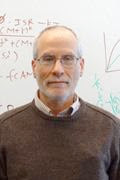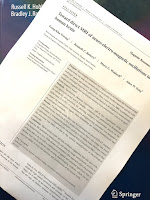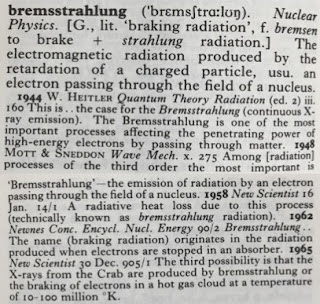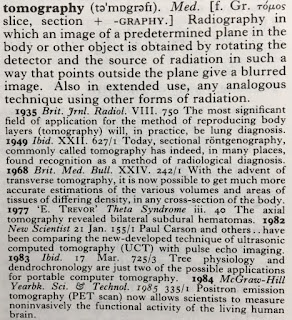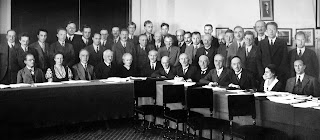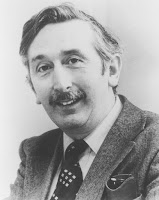 |
| Godfrey Hounsfield (1919-2004). |
In Intermediate Physics for Medicine and Biology, Russ Hobbie and I write
The history of the development of computed tomography is quite interesting (Kalender 2011). The Nobel Prize in Physiology or Medicine was shared in 1979 by a physicist, Allan Cormack, and an engineer, Godfrey Hounsfield…The Nobel Prize acceptance speeches (Cormack 1980; Hounsfield 1980) are interesting to read.To celebrate the centenary of Hounsfield’s birth, I’ve collected excerpts from his interesting Nobel Prize acceptance speech.
When we consider the capabilities of conventional X-ray methods, three main limitations become obvious. Firstly, it is impossible to display within the framework of a two-dimensional X-ray picture all the information contained in the three-dimensional scene under view. Objects situated in depth, i. e. in the third dimension, superimpose, causing confusion to the viewer.
Secondly, conventional X-rays cannot distinguish between soft tissues. In general, a radiogram differentiates only between bone and air, as in the lungs. Variations in soft tissues such as the liver and pancreas are not discernible at all and certain other organs may be rendered visible only through the use of radio-opaque dyes.
Thirdly, when conventional X-ray methods are used, it is not possible to measure in a quantitative way the separate densities of the individual substances through which the X-ray has passed. The radiogram records the mean absorption by all the various tissues which the X-ray has penetrated. This is of little use for quantitative measurement.
Computed tomography, on the other hand, measures the attenuation of X-ray beams passing through sections of the body from hundreds of different angles, and then, from the evidence of these measurements, a computer is able to reconstruct pictures of the body’s interior...
The technique’s most important feature is its [enormous] sensitivity. It allows soft tissue such as the liver and kidneys to be clearly differentiated, which radiographs cannot do…
It can also very accurately measure the values of X-ray absorption of tissues, thus enabling the nature of tissue to be studied.
These capabilities are of great benefit in the diagnosis of disease, but CT additionally plays a role in the field of therapy by accurately locating, for example, a tumour so indicating the areas of the body to be irradiated and by monitoring the progress of the treatment afterwards...Famous scientists and engineers often have fascinating childhoods. Learn about Hounsfield’s youth by reading these excerpts from his Nobel biographical statement.
I was born and brought up near a village in Nottinghamshire and in my childhood enjoyed the freedom of the rather isolated country life. After the first world war, my father had bought a small farm, which became a marvellous playground for his five children… At a very early age I became intrigued by all the mechanical and electrical gadgets which even then could be found on a farm; the threshing machines, the binders, the generators. But the period between my eleventh and eighteenth years remains the most vivid in my memory because this was the time of my first attempts at experimentation, which might never have been made had I lived in a city… I constructed electrical recording machines; I made hazardous investigations of the principles of flight, launching myself from the tops of haystacks with a home-made glider; I almost blew myself up during exciting experiments using water-filled tar barrels and acetylene to see how high they could be waterjet propelled…
Aeroplanes interested me and at the outbreak of the second world war I joined the RAF as a volunteer reservist. I took the opportunity of studying the books which the RAF made available for Radio Mechanics and looked forward to an interesting course in Radio. After sitting a trade test I was immediately taken on as a Radar Mechanic Instructor and moved to the then RAF-occupied Royal College of Science in South Kensington and later to Cranwell Radar School. At Cranwell, in my spare time, I sat and passed the City and Guilds examination in Radio Communications. While there I also occupied myself in building large-screen oscilloscope and demonstration equipment as aids to instruction...
It was very fortunate for me that, during this time, my work was appreciated by Air Vice-Marshal Cassidy. He was responsible for my obtaining a grant after the war which enabled me to attend Faraday House Electrical Engineering College in London, where I received a diploma.
I joined the staff of EMI in Middlesex in 1951, where I worked for a while on radar and guided weapons and later ran a small design laboratory. During this time I became particularly interested in computers, which were then in their infancy… Starting in about 1958 I led a design team building the first all-transistor computer to be constructed in Britain, the EMIDEC 1100…Happy birthday, Godfrey Hounsfield. Your life and work made a difference.
I was given the opportunity to go away quietly and think of other areas of research which I thought might be fruitful. One of the suggestions I put forward was connected with automatic pattern recognition and it was while exploring various aspects of pattern recognition and their potential, in 1967, that the idea occurred to me which was eventually to become the EMI-Scanner and the technique of computed tomography...
Watch “The Scanner Story,” a documentary made by EMI
about their early computed tomography brain scanners.
The video, filmed in 1978, shows its age but is engaging.
The video, filmed in 1978, shows its age but is engaging.
Part Two of “The Scanner Story.”


